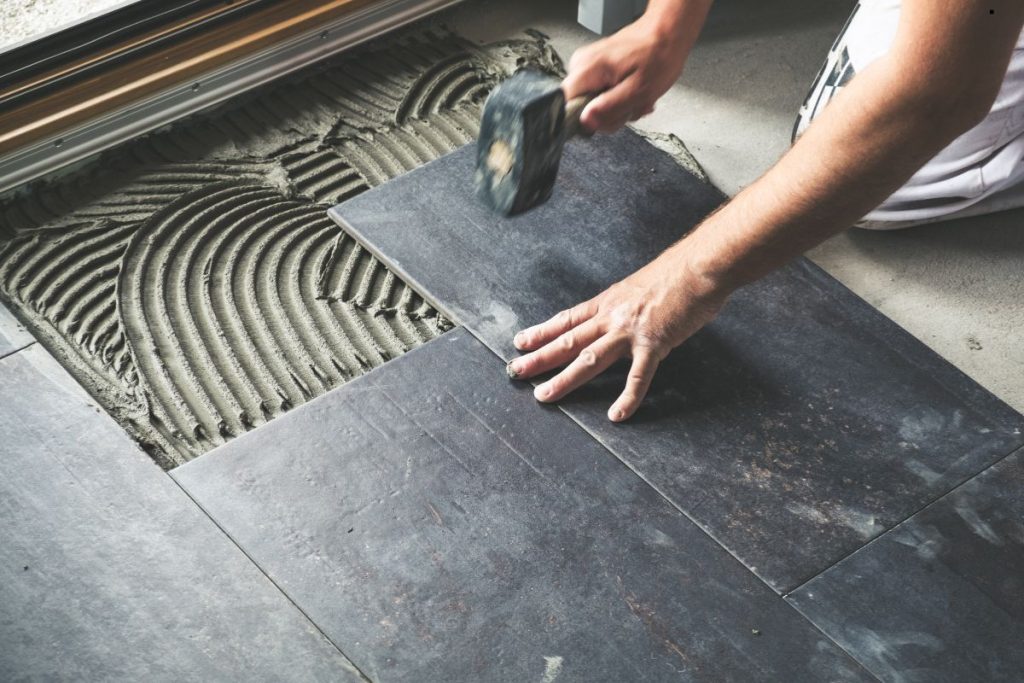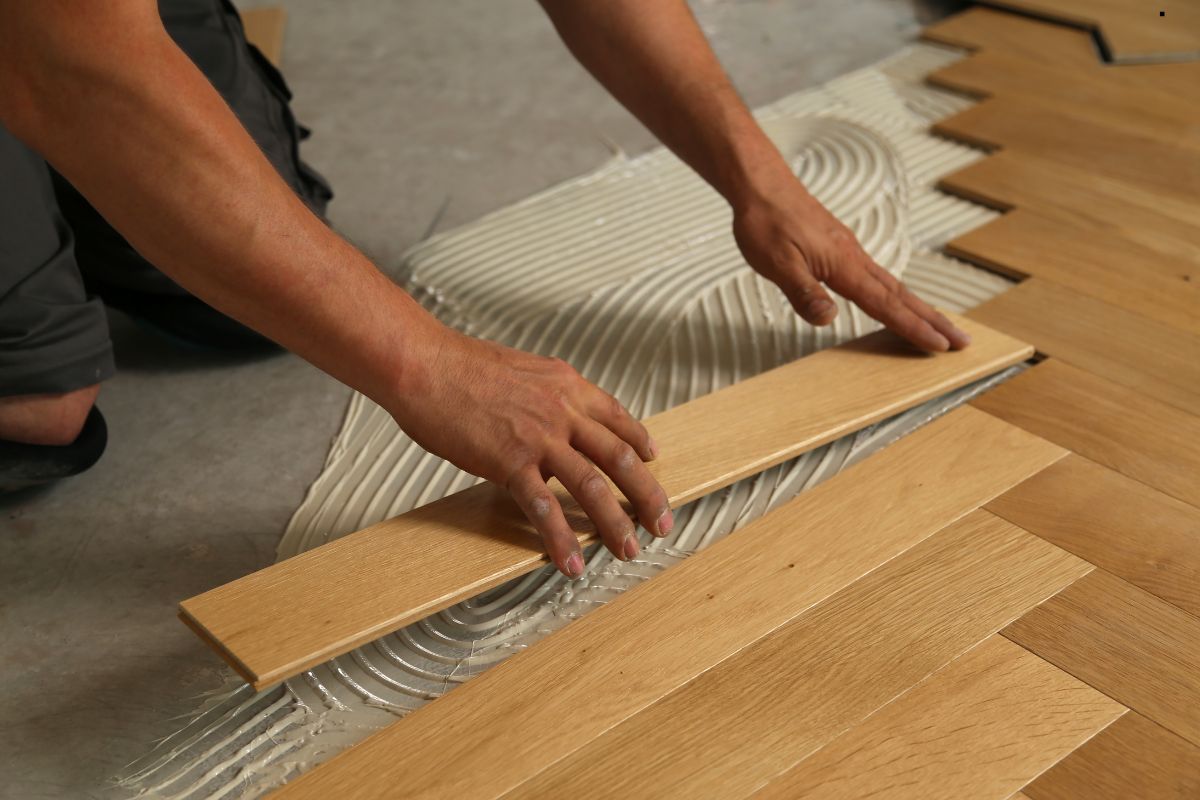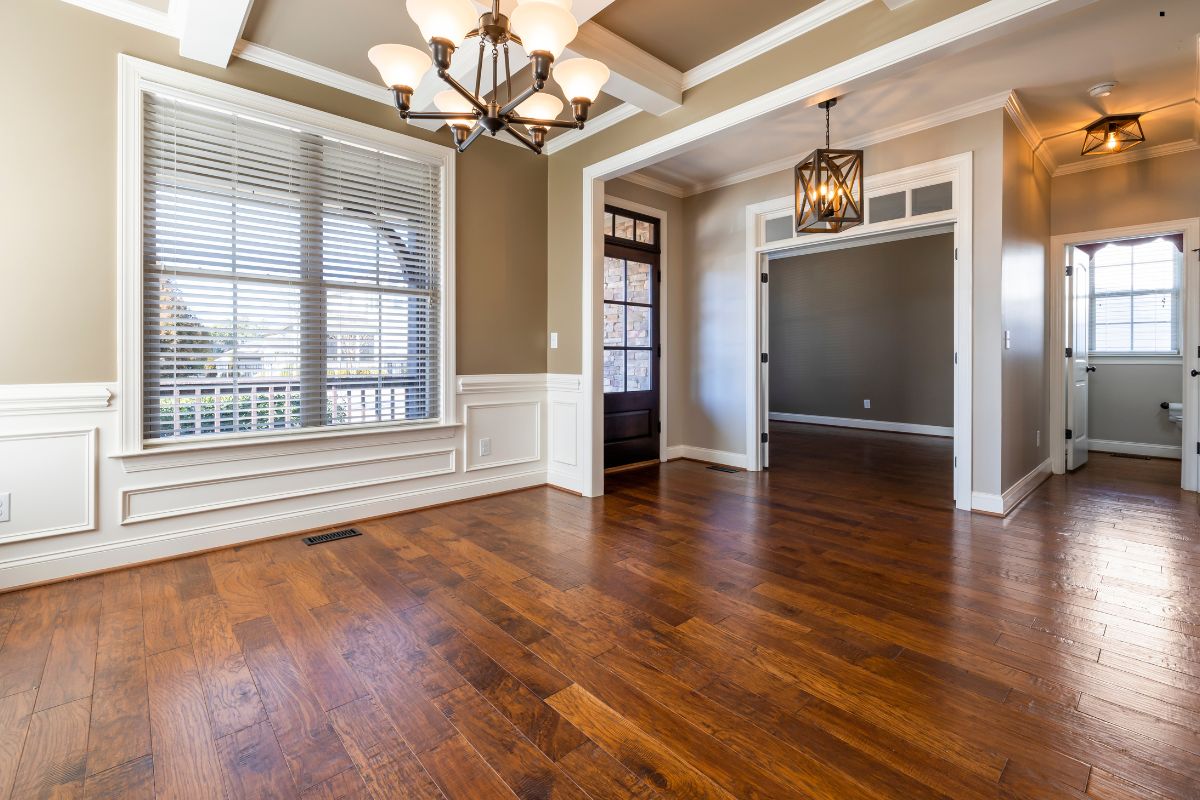
Worried about that “new floor smell” and how it might affect your family’s health? Off-gassing from new flooring is a common concern, but there are proven methods to accelerate the process and create a healthier home environment. By understanding what causes off-gassing, choosing low-VOC materials, maximizing ventilation, and utilizing air purification techniques, you can significantly reduce the duration and impact of chemical emissions. Keep reading to discover practical steps you can take right now!
Welcome to a Fresher, Healthier Home: Understanding Off-Gassing

Installing new flooring is an exciting home improvement project. However, that fresh, clean look can sometimes come with an unwanted side effect: off-gassing. Off-gassing refers to the release of volatile organic compounds (VOCs) from materials used in the flooring, adhesives, and finishes. These VOCs can impact your indoor air quality and, in some cases, cause temporary health issues. Fortunately, there are effective ways to minimize and speed up this process, allowing you to enjoy your beautiful new floors without compromising your well-being. This article provides practical tips and strategies to create a fresh and healthy home after flooring installation. For more tips on choosing the right flooring, visit The Best Flooring Options for Your Entryway in Sacramento.
Understanding Off-Gassing: What is Off-Gassing and Why Does It Happen?
Off-gassing occurs when VOCs, chemicals present in many building materials, gradually evaporate into the air. These VOCs come from adhesives, the flooring material itself, and any finishes applied. The concentration of VOCs is usually highest immediately after installation and decreases over time. Factors like temperature, humidity, and ventilation influence the rate of off-gassing.
- What are VOCs? :Volatile organic compounds are carbon-based chemicals that easily evaporate at room temperature. Common VOCs found in flooring products include formaldehyde, benzene, toluene, and xylene.
- Sources of Off-Gassing in New Flooring: The primary sources are the flooring material itself (especially synthetic materials like vinyl and laminate), the adhesives used to install the flooring, and any surface finishes or sealants applied.
Call us today for a free consultation on selecting low-VOC flooring options!
Identifying Flooring Types and Their Off-Gassing Potential: Which Flooring Types Off-Gas the Most?
Not all flooring types are created equal when it comes to off-gassing. Some materials tend to release more VOCs than others. Here’s a general overview:
- Carpet: Carpets can off-gas chemicals from the fibers, backing, and adhesives, which may affect indoor air quality. To explore healthier options, visit carpet tile flooring for more details.
- Vinyl (LVP/LVT): Often contains phthalates and other VOCs that contribute to off-gassing.
- Laminate: Made from pressed wood and resins, which can release formaldehyde.
- Engineered Wood: Similar to laminate, it can contain formaldehyde-based adhesives.
- Solid Wood: Generally lower in VOCs than synthetic options, especially when finished with natural oils or water-based sealants.
- Tile & Stone: Typically have very low off-gassing potential.
When choosing flooring, look for certifications like Floor Score or Greengard, which indicate that the product has been tested and meets low-VOC emission standards.
Preparing for Flooring Installation: Proactive Steps Before Installation Begins

Taking proactive steps before the installation process can significantly reduce off-gassing.
- Ventilation is Key: Ensure proper ventilation during and after installation by opening windows and using fans.
- Choosing Low-VOC Options: Select flooring materials, adhesives, and finishes that are labeled as low-VOC or VOC-free.
- Acclimation Process: Allow flooring materials to acclimate to the room’s temperature and humidity for several days before installation. This can help release some VOCs before the flooring is installed.
- Ask for Material Safety Data Sheets (MSDS): Request MSDS from the manufacturer or retailer to understand the chemical composition of the products.
Need help selecting the right flooring? Contact us for expert advice and installation services! Call us
Speeding Up Off-Gassing After Installation: Proven Methods to Accelerate the Process
Once the flooring is installed, you can take these steps to speed up the off-gassing process:
- Maximize Ventilation: Keep windows open and use fans to circulate fresh air.
- Increase Air Circulation: Use oscillating fans or ceiling fans to promote air movement.
- Temperature Control: Higher temperatures can increase the rate of off-gassing, so maintain a moderate temperature.
- Use Air Purifiers with Activated Carbon Filters: Air purifiers with activated carbon filters can effectively remove VOCs from the air.
- Baking Soda Power: Sprinkle baking soda on the floor (especially carpets) and let it sit for several hours before vacuuming to absorb odors and VOCs.
- Houseplants that Absorb VOCs: Certain houseplants, like snake plants, spider plants, and peace lilies, can help remove VOCs from the air.
Maintaining Healthy Air Quality Long-Term: Beyond the Initial Off-Gassing Period: Long-Term Air Quality Strategies
Maintaining good indoor air quality is an ongoing process.
- Regular Cleaning Practices: Regularly vacuum and clean your floors to remove dust and allergens.
- Controlling Humidity Levels: Maintain humidity levels between 30-50% to prevent mold growth, which can contribute to poor air quality.
- Ongoing Ventilation: Continue to ventilate your home regularly, even after the initial off-gassing period.
- Consider Professional Air Quality Testing: If you have concerns about indoor air quality, consider hiring a professional to conduct air quality testing.
Addressing Health Concerns: When to Seek Medical Advice
While off-gassing is usually temporary, exposure to high levels of VOCs can cause health issues in some individuals.
- Symptoms to Watch Out For: Common symptoms include headaches, dizziness, nausea, eye, nose, and throat irritation, and respiratory problems.
- Documenting Your Concerns: Keep a record of your symptoms and when they occur.
If you experience persistent or severe symptoms, consult with your doctor.
Conclusion: Breathe Easy: Creating a Healthier Home Environment
Off-gassing from new flooring is a temporary issue that can be effectively managed with proactive measures and informed choices. By selecting low-VOC flooring, maximizing ventilation, using air purification techniques, and maintaining good indoor air quality practices, you can create a fresh and healthy home environment for yourself and your family. Don’t hesitate to [Call us] to discuss your flooring project and how we can help you choose the healthiest and most beautiful options available. Your family’s health and your peace of mind are worth it!
Ready to breathe easier in your home? Contact us for a personalized flooring consultation today! Contact us

